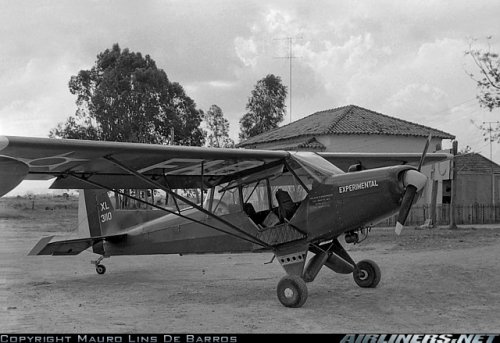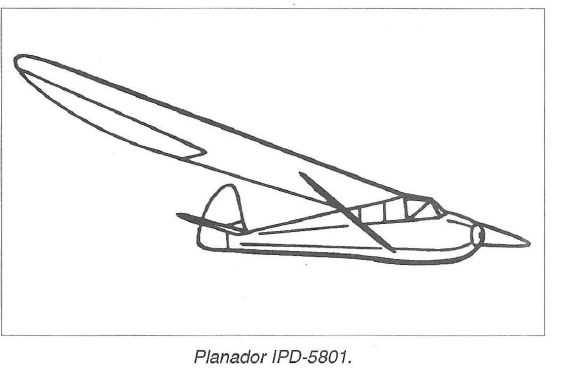I thought I would try to pull all known CTA designations together in one chronological list.
Centro Técnico de Aeronáutica - Background
The government of Brazil established the Comissão de Organização do Centro Técnico de Aeronáutica (COCTA or the Organizing Committee of the Aeronautics Technical Center) in March 1949. On 01 January 1954, the Centro Técnico de Aeronáutica (CTA or Aeronautical Technical Center) was officially established and COCTA was dissolved. By 1953, CTA had two units. One was the Instituto Tecnológico de Aeronáutica (ITA or Aeronautical Technical Institute) - an aviation technician training facility. [1] The second was the Instituto de Pesquisa e Desenvolvimento (IPD or the Research and Development Institute) which was responsible for both research and prototyping. Initially, the IPD absorbed virtually all of the graduates of the ITA.
Prototyping was handled by the PAR - the Departamento de Aeronaves do IPD (or IPD Aircraft Department). For some reason, Brazilian sources never seem to actually define this PAR acronym. [2] The CTA has now been rebranded as the Centro Técnico Aeroespacial (Aerospace Technical Center).
CTA Aircraft Project Designation Styles
Early CTA designations include the separate Heliconair (HC) series and Beija-Flôr (BF) series. Both sequences related to Heinrich Focke projects - the HC series to convertiplanes, the BF series to helicopters. A later, rationalized sequence was the IPD or IPD/PAR series (many sources use these interchangeably - it probably began as an IPD series being incorporating the Aircraft Department acronym as IPD/PAR).
The IPD and IPD/PAR series numbers are based on the year followed by design order. So, the embryonic Bandeirante utility transport designated IPD/PAR-6504 stood for the IPD's fourth aircraft of 1965.
BTW, there don't appear to have been any designated IPD projects from 1960, 1963-1964, or 1966. I have speculated that the unbuilt Maraba turboprop transport may have been designated in the IPD/PAR-670x sequence. Of course, alternatively, the Maraba project may have received no IPD designation at all.
__________________________________________
[1] The ITA has since been renamed as the Instituto de Aeronáutica e Espaço (IAE or Institute of Aeronautics and Space).
[2] This is also true for the other three IPD technical departments - PEA (Departamento de eletrônica do IPD); PMO (Departamento de motores do IPD); and PMR (Departamento de materiais do IP).
__________________________________________
CTA Aircraft Project Designations
Heliconair Series
On arrival in Brazil, Heinrich Focke began work on Focke metatrepoplano (convertiplane) concepts. This was
partially realized as ITA's Heliconair HC-Ib Convertiplano.
Heliconair: (Project) 4-rotored Spitfire XIV-based convertiplane
- HC-I : (Project) 1 x 3,000 hp Armstrong-Siddeley Double Mamba turboshafts
-- Armstrong-Siddeley declined to sell its turboshaft engines to Brazil
- HC-Ib: 1 x 2,200 hp Wright R-3350 radial driving 4 x extention shafts
-- Semi-completed (engine installed) but HC-Ib conv. was never flown
- HC-II: (Project) 4 x tilting 1,400 hp General Electric T58 turboshafts
Beija-Flôr (Hummingbird) Series
BF-1 Beija-Flôr: 1959 2-seat light helicopter, Henrich Focke design, x 3
- BF-1: 1 x nose-mounted 225 hp Continental E225 HO6, main rotor diam. 9.00 m
-- BF-1 prototype abandoned after being damaged during flight tests
BF-2 Beija-Flôr: (Project) 4-seat light helicopter, BF-1 refinement
- BF-2: Engine moved to centre fuselage, convential tail/tail rotor*
-- * Rather than the twin, intermeshing tail rotors of the BF-1
BF-3 : (hypothetical designation)
BF-4 Beija-Flôr: (Project) 4-seat light helicopter, poss. conf. with BF-2
CTA Aircraft Project Designations - IPD and IPD/PAR Series
IPD 5801 - 1958 2-seat sailplane trainer, Neiva B Monitor deriv.
- IPD 5801: Monitor fuselage mated to new wings, span 14.00 m*
- IPD 5801: Single prototype went to CTA's Club de Voo-à-vela
-- *Original Neiva B Monitor wing had a span of 15.86 m
IPD-5802 - Campeiro high-winged liaison aircraft, x 2 prototypes
- IPD-5802: Military observation deriv. of Neiva 56D Paulistinha
IPD-5901 - Regente high-winged liaison aircraft, all-metal const.
- IPD-5901: Prototype Neiva Regente 360C, FAB U-42 (later C-42)*
-- NB: FAB L-42 was based on revised, 3-seat Regente 420L model
IPD-600x - (??)
IPD/PAR-6101 - Low-wing 4-seat basic trainer/light a/c
- IPD/PAR-6101: Avibrás A-90A Alvorada (Dawn)*
-- Tricycle u/c; prototyped or unbuilt project(?)
IPD-6201 - Universal, low-winged 2-seat military basic trainer
- IPD-6201: Entered production as Neiva N 621 Universal, FAB T-25
IPD-630x-IPD-640x - (??)
IPD/PAR-6501-6504 - (Projects) Deriv.s of French Max Holste MH-260
- IPD-6501: 1 x Turbomeca Astazou or Bastan turboprop
- IPD-6502: 1 x Turbomeca Astazou or Bastan turboprop
- IPD-6503: 1 x Turbomeca Astazou or Bastan turboprop
- IPD-6503: 1 x 580 hp P&WC PT6A-20 turboprop
IPD/PAR-6504 - Bandeirante twin-engined light transport aircraft
- IPD/PAR-6504: Prototype Embraer EMB-110 Bandeirante
- IPD/PAR-6504: 2 x 550 shp P&WC PT6A-20, preserved as FAB YC-95
IPD/PAR-6505 - 1968 Urupema single-seat sailplane sport trainer
- IPD/PAR-6505: Production as Embraer EMB-400 Urupema in 1969
-- Design begun in 1964 by ITA students under Prof. Guido Pessotti
IPD/PAR-660x - (??)
IPD/PAR-670(?) - (Project) Maraba twin-turboprop transport
- IPD/PAR-670(?): Speculative designation
- IPD/PAR-670(?): FAB C-47 repl., stretched IPD/PAR-6504*
-- * Or possibly re-arranged components w/ high wings?








